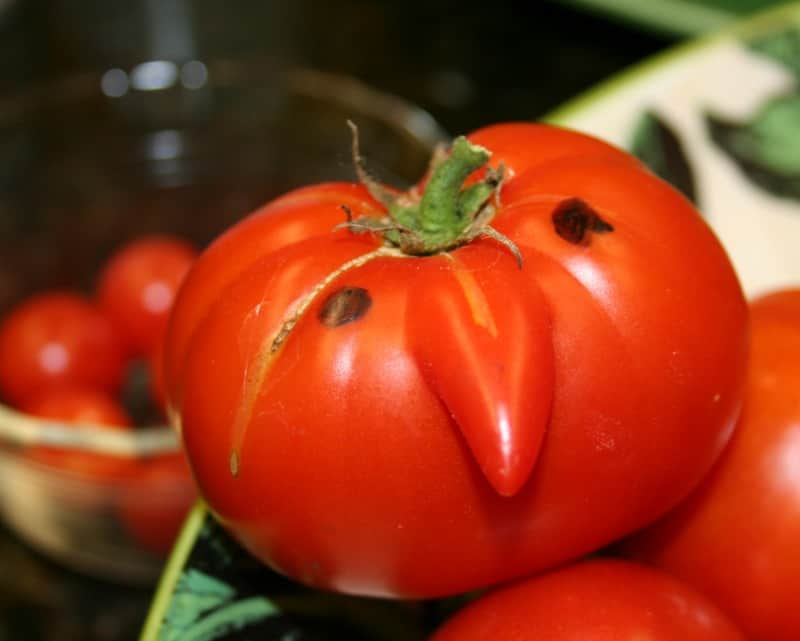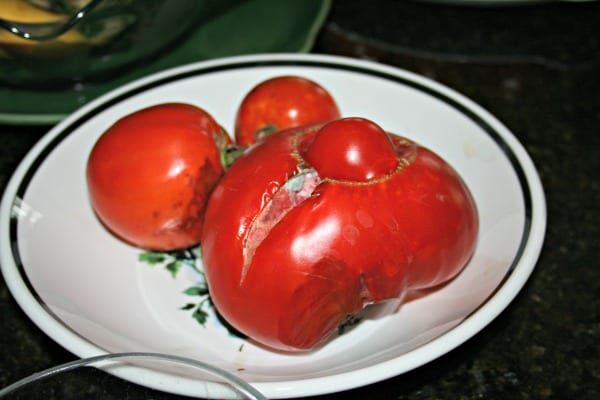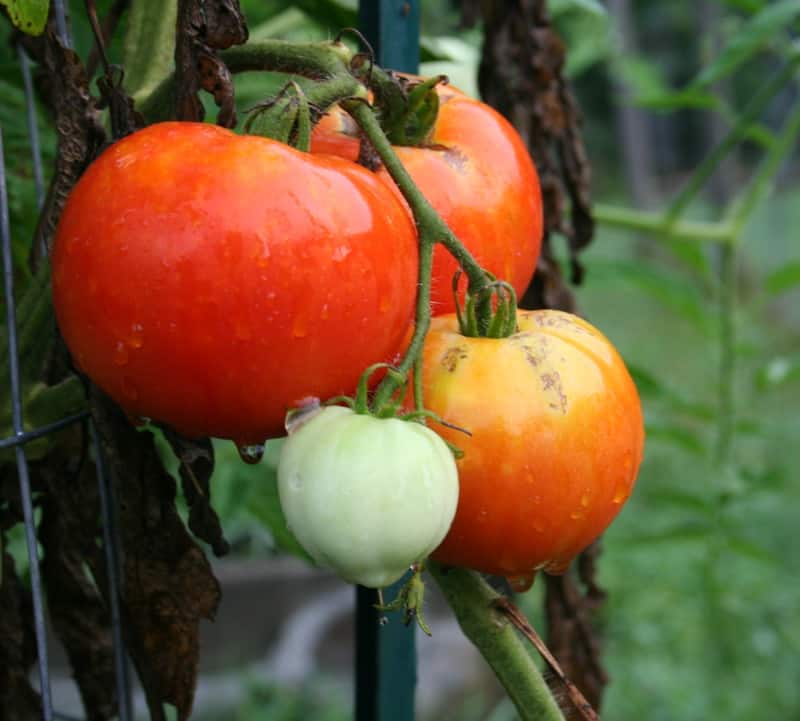Tomato nose. Yeah, this guy.
I’ve spotted a few tomatoes with “noses” over the years, but never stopped to ask what causes a tomato with a nose? Tomato nose (or horn) is actually a genetic defect that, according to some sources, affects 1 out of every 1,000 plants. Tomatoes with this appearance are safe to eat. Here’s why tomatoes grow horns or noses.
What Causes Tomato Nose?
As a tomato grows from a single, fertilized cell, some cells divide and become the locules. A “nose” grows from a locule that divides incorrectly. The average tomato has five locules. When cells divide incorrectly, they produce an extra locule, which creates the “horn” or nose.
High Temperatures Increase Likelihood of Faulty Cell Division
What is so interesting to me is that extended high temperatures over 90 degrees, particularly warm evening temperatures, can increase the likelihood of the deformity. We had an awful ‘heat dome’ over the past few weeks that kept temps into the 80s overnight. I think that may have increased the chance of my wonky tomato face. It may affect only a few tomatoes.
Some say that heirloom varieties are more likely to be affected. This plant is either a “Celebrity” or “Supersonic” tomato variety. These are supposed to be better able to withstand southern heat.
I don’t mind. Tomato nose is fun. My husband occasionally draws faces on them and leaves them in the kitchen for me to find in the morning. It still makes me laugh after all these years.
Can You Eat Tomatoes with Tomato Nose or Horns?
The big question remains: can you eat a tomato with a deformity like this?
Answer: Absolutely!
The wonky genetics doesn’t compromise the taste.
Now there are many other tomato diseases that create odd-looking tomatoes that look or taste bad. But as far as tomato problems go, I will take this one any day.
More Tomato Growing Tips







